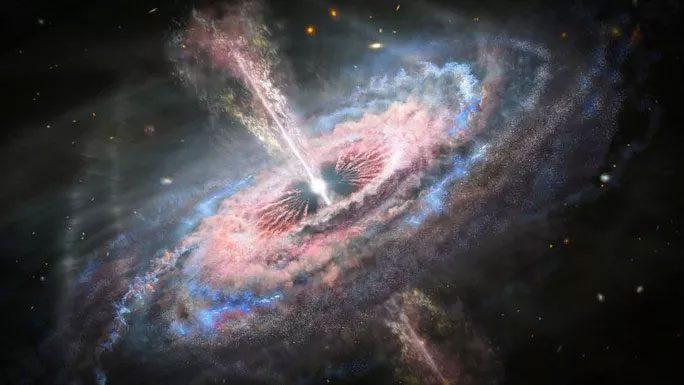The NASA Hubble Space Telescope has captured a stunning image of a series of quasars – a form of black holes masquerading as extremely bright stars – emitting powerful beams that tear through galaxies.
According to a publication in the Astrophysical Journal Supplements, a research team led by astronomer Nahum Arav from Virginia Tech has discovered some of the most powerful energy sources ever identified in the universe, far exceeding those of so-called “supermassive” black holes.

An image depicting a distant galaxy with a quasar “monster” at its core – (Photo: NASA/ESA/STScI)
The streams of gas emitted by quasars – also known as “standard candles” – are ripping apart the space between stars, sweeping through galaxies like a tsunami devastates land, causing severe destruction to these galaxies.
If a galaxy happens to have a quasar at its “heart,” this tiny central object can shine 1,000 times brighter than its host galaxy. This brilliant light corresponds to its destructive power. It is this intense brightness that gives it the Vietnamese name “standard candle”: viewed from Earth, a quasar can shine like a star within its galaxy, even though it is located at a great distance. Of course, it is not a star but an incredibly powerful black hole, voraciously consuming material at such a speed that it appears star-like.
Driven by radiation pressure from the black hole, violent explosions eject material from the centers of the galaxies hosting quasars, creating the aforementioned tremendous streams of material.
Speaking to Sci-tech Daily, scientists noted that quasars emitting such powerful streams of material were quite common in the early universe. While they wreak havoc on galaxies, the turbulence caused by quasar winds can also stimulate the formation of new stars.


















































